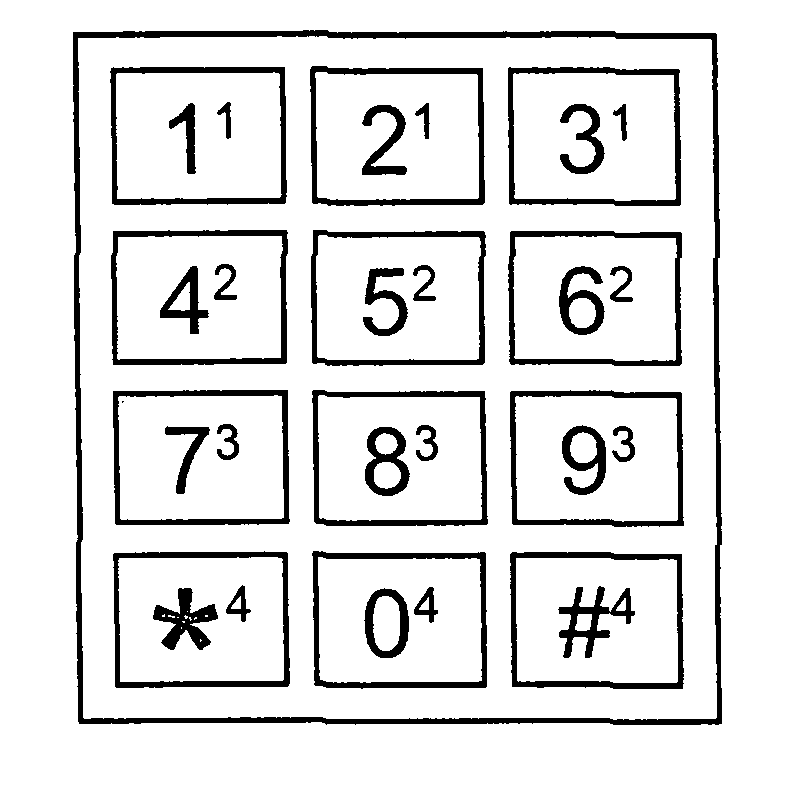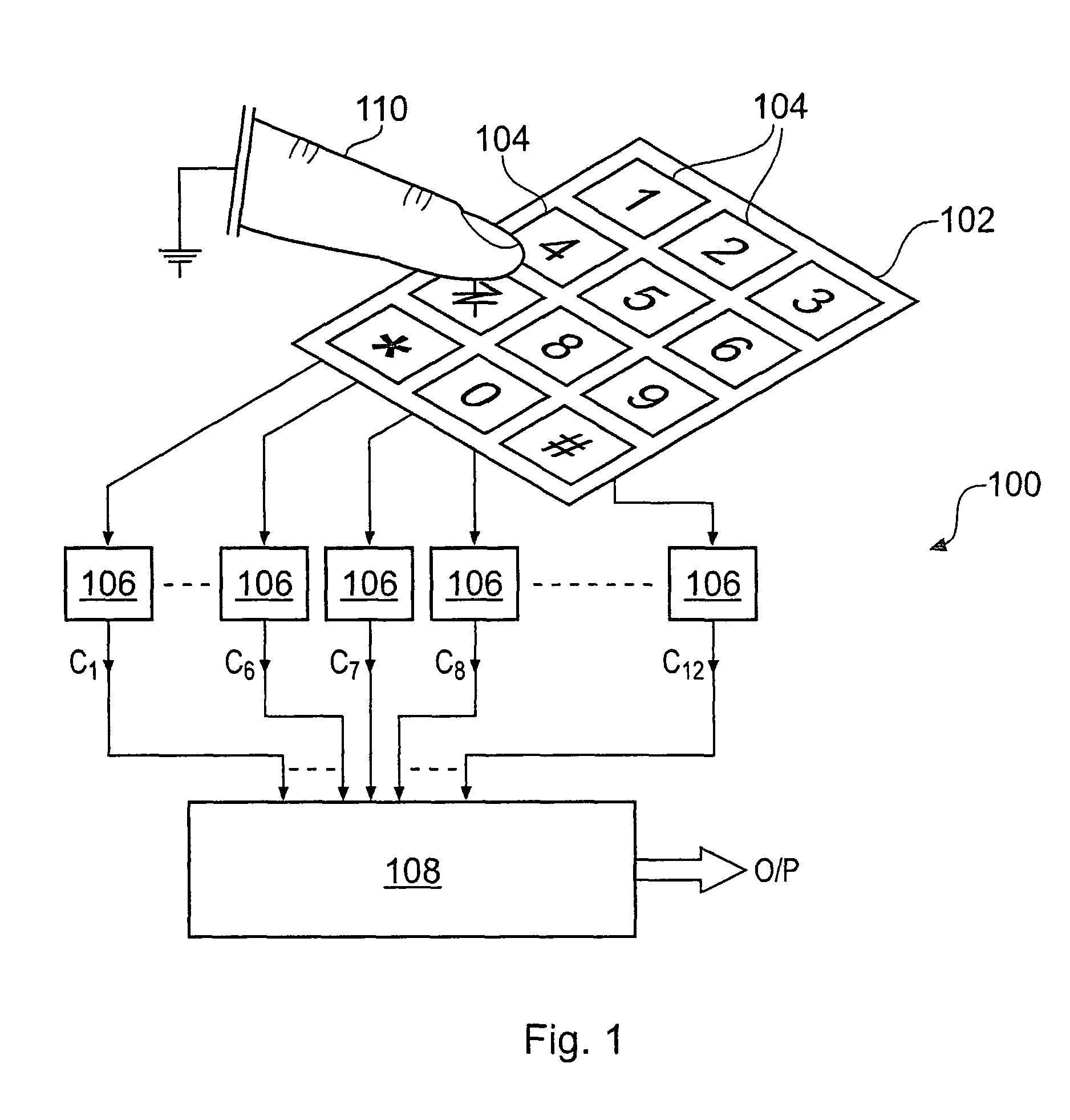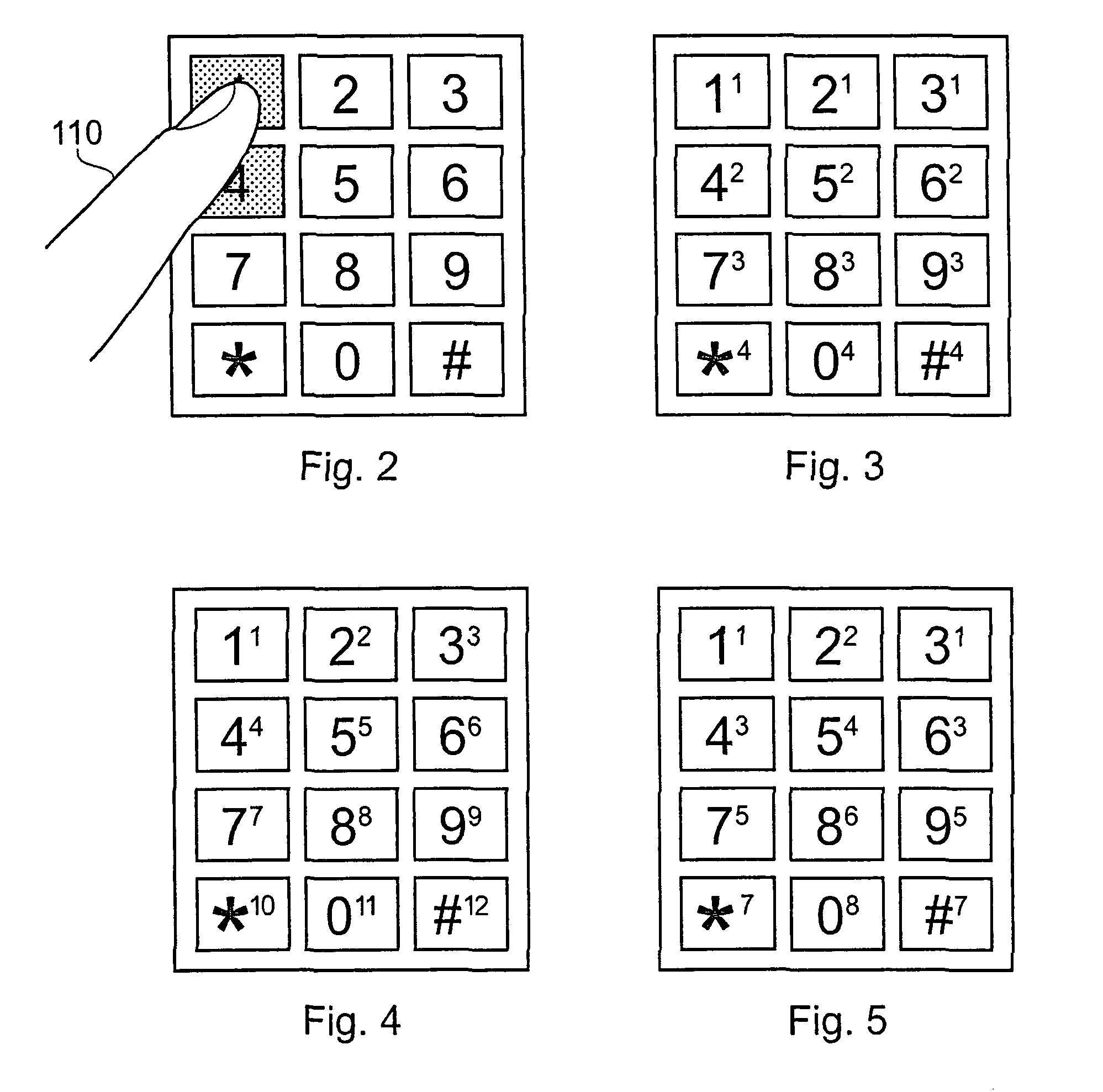Capacitive keyboard with position dependent reduced keying ambiguity
a capacitive keyboard and position-dependent technology, applied in the field of touch-sensitive user interfaces, can solve the problems of increasing the effective area of the finger tip, particularly apparent, and problematic, and achieve the effects of reducing the size of the fingertip, and reducing the ambiguity of the keying
- Summary
- Abstract
- Description
- Claims
- Application Information
AI Technical Summary
Benefits of technology
Problems solved by technology
Method used
Image
Examples
Embodiment Construction
[0045]FIG. 1 schematically shows in perspective view a touch sensitive user interface (UI) 100 according to an embodiment of the invention. The UI comprises a sensing region 102 having an array of discrete capacitive sensing areas 104. In this example there are twelve sensing areas arranged in a three-by-four array. The sensing region 102 may conveniently be referred to as a keyboard or keypad and the sensing areas 104 may conveniently be referred to as keys. Also shown in FIG. 1 is a pointing object 110, in this case a user's finger, approaching the keypad to select one of the keys.
[0046]The keypad 102 may be of conventional design. In this embodiment the keypad is formed of a plastic substrate having discrete areas of conductive material deposited on the underside thereof to provide sensing electrodes. The shapes and locations of the electrodes define the shapes and locations of the corresponding sensing areas of the keyboard / keypad.
[0047]The sensing electrodes are coupled to resp...
PUM
 Login to View More
Login to View More Abstract
Description
Claims
Application Information
 Login to View More
Login to View More - R&D
- Intellectual Property
- Life Sciences
- Materials
- Tech Scout
- Unparalleled Data Quality
- Higher Quality Content
- 60% Fewer Hallucinations
Browse by: Latest US Patents, China's latest patents, Technical Efficacy Thesaurus, Application Domain, Technology Topic, Popular Technical Reports.
© 2025 PatSnap. All rights reserved.Legal|Privacy policy|Modern Slavery Act Transparency Statement|Sitemap|About US| Contact US: help@patsnap.com



